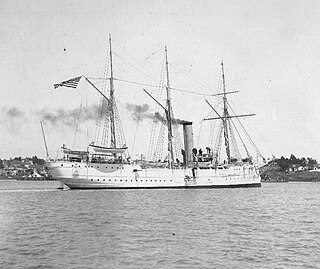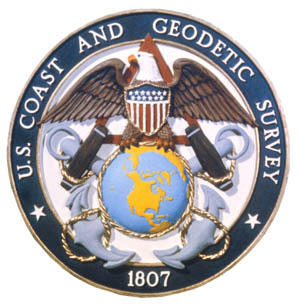
A brig is a type of sailing vessel defined by its rig: two masts which are both square-rigged. Brigs originated in the second half of the 18th century and were a common type of smaller merchant vessel or warship from then until the latter part of the 19th century. In commercial use, they were gradually replaced by fore-and-aft rigged vessels such as schooners, as owners sought to reduce crew costs by having rigs that could be handled by fewer men. In Royal Navy use, brigs were retained for training use when the battle fleets consisted almost entirely of iron-hulled steamships.

The tall ship Elissa is a three-masted barque. She is based in Galveston, Texas, and is one of the oldest ships sailing today. Launched in 1877, she is now a museum ship at the Texas Seaport Museum. She was designated a National Historic Landmark in 1990. The Texas Legislature designated Elissa the official tall ship of Texas in 2005.

Effie M. Morrissey is a schooner skippered by Robert Bartlett that made many scientific expeditions to the Arctic, sponsored by American museums, the Explorers Club and the National Geographic Society. She also helped survey the Arctic for the United States Government during World War II. She is currently designated by the United States Department of the Interior as a National Historic Landmark as part of the New Bedford Whaling National Historical Park. She is the State Ship of Massachusetts.

The Portland Gale was a storm that struck the coast of New England on November 26 and 27, 1898. The storm formed when two low pressure areas merged off the coast of Virginia and travelled up the coast; at its peak, it produced a storm surge of about ten feet in Cohasset harbor and hurricane-force winds in Nantucket. The storm killed more than 400 people and sank more than 150 boats and ships. It also changed the course of the North River, separating the Humarock portion of Scituate, Massachusetts, from the rest of Scituate.

Louis François de Pourtalès was a Franco-American naturalist, born at Neuchâtel, Switzerland.

The Paul Palmer was a five-masted schooner built in 1902 by George F. Welt in Waldoboro, Maine.

USS McCulloch, previously USRC McCulloch and USCGC McCulloch, was a ship that served as a United States Revenue Cutter Service cutter from 1897 to 1915, as a United States Coast Guard Cutter from 1915 to 1917, and as a United States Navy patrol vessel in 1917. She saw combat during the Spanish–American War during the Battle of Manila Bay and patrolled off the United States West Coast during World War I. In peacetime, she saw extensive service in the waters off the U.S. West Coast. She sank in 1917 after colliding with another steamer.

The first USS Wanderer was a high-speed schooner originally built for pleasure. It was used in 1858 to illegally import slaves from Africa. It was seized for service with the United States Navy during the American Civil War. In U.S. Navy service from 1861 to 1865, and under outright U.S. Navy ownership from 1863 to 1865, she was used by the Union Navy as a gunboat, as a tender, and as a hospital ship. She was decommissioned, put into merchant use, and lost off Cuba in 1871.

USS Polaris, originally called the America, was an 1864-screw steamer procured by the Union Navy as USS Periwinkle during the final months of the American Civil War. She served the Union Navy's struggle against the Confederate States as a gunboat.

The United States Coast and Geodetic Survey, known from 1807 to 1836 as the Survey of the Coast and from 1836 until 1878 as the United States Coast Survey, was the first scientific agency of the United States Government. It existed from 1807 to 1970, and throughout its history was responsible for mapping and charting the coast of the United States, and later the coasts of U.S. territories. In 1871, it gained the additional responsibility of surveying the interior of the United States and geodesy became a more important part of its work, leading to it being renamed the U.S. Coast and Geodetic Survey in 1878.

USC&GS Carlile P. Patterson was a survey ship of the United States Coast and Geodetic Survey in operation between 1883 and 1918. Subsequently, she had a brief period of naval service and fifteen seasons as a merchant vessel before she was wrecked on the Alaska coast in 1938.

USCS Robert J. Walker was a survey ship that served in the United States Coast Survey, a predecessor of the United States Coast and Geodetic Survey, from 1848 until sinking in 1860 after a collision at sea. Her loss resulted in the death of 20 men, the greatest loss of life in single incident ever to befall the National Oceanic and Atmospheric Administration or any of its ancestor agencies. It was added to the National Register of Historic Places on March 19, 2014.
Many ships have wrecked in and around San Francisco Bay. For centuries San Francisco Bay, with its strong currents, rocky reefs, and low fog conditions has experienced more than a hundred shipwrecks. Ever since San Francisco Bay was discovered during the land expedition of Gaspar de Portolà in 1769, it has been one of the most popular harbors.

The Great Lakes Patrol was carried out by American naval forces, beginning in 1844, mainly to suppress criminal activity and to protect the maritime border with Canada. A small force of United States Navy, Coast Guard, and Revenue Service ships served in the Great Lakes throughout these operations. Through the decades, they were involved in several incidents with pirates and rebels.

Gallinipper was a schooner that sank in Lake Michigan off the coast of Centerville, Manitowoc County, Wisconsin, United States. In 2010, the shipwreck site was added to the National Register of Historic Places.

Home was a two-masted schooner which sank in Lake Michigan off Centerville in Manitowoc County, Wisconsin, United States, in 1858. In 2010 the shipwreck site was added to the National Register of Historic Places.
William Patterson Shipbuilders was a major shipbuilder in Bristol, England during the 19th century and an innovator in ship construction, producing both the SS Great Western and SS Great Britain, fine lined yachts and a small number of warships.

Eldred Rock is an island in the boroughs of Juneau and Haines, Alaska, United States. Located in Lynn Canal, it is 2.7 miles (4.3 km) southeast of Kataguni Island and 55 miles (89 km) northwest of the city of Juneau. This island is the site of the Eldred Rock Light, a lighthouse built in 1905 and staffed until the United States Coast Guard automated its operation in 1973.
American Rover is a tall ship that operates public and private passenger harbor cruises from Norfolk, Virginia.

The Shenandoah is a three-masted schooner with a steel hull, built in New York in 1902 as a private yacht for the American financier Gibson Fahnestock. She has had a series of private owners since, and is available today for charter.


















